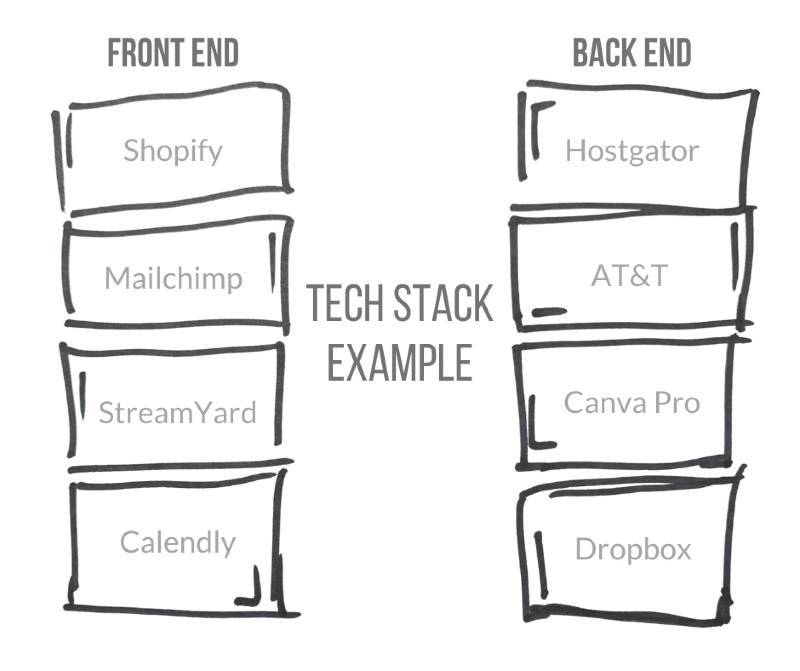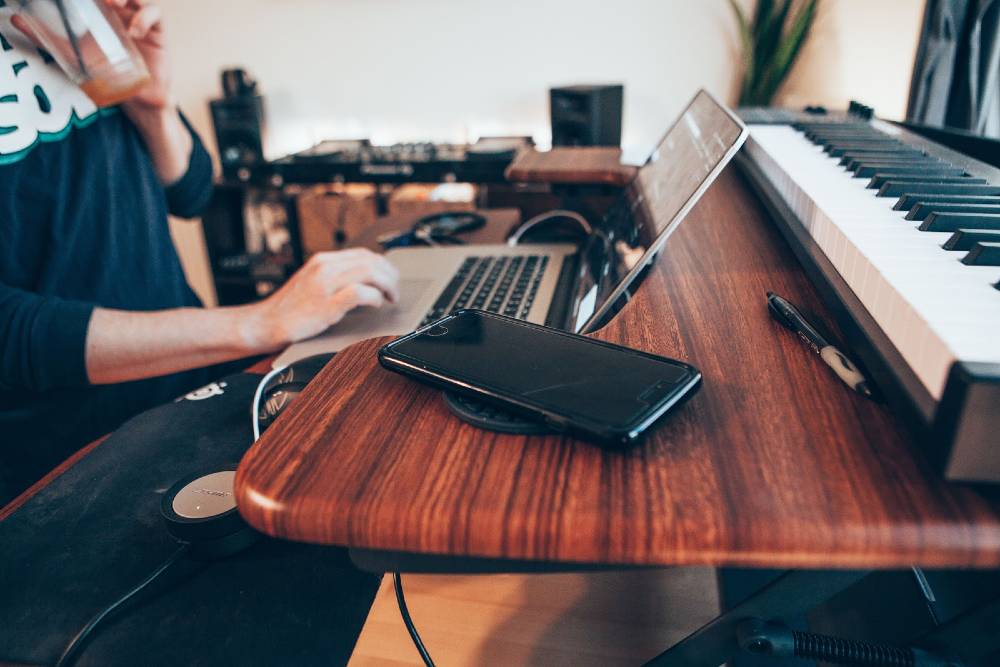How to Build Your Ideal Tech Stack
Guest post by Leonard Patterson, Indie Band Coach
Before you get bogged down in any tech, just remember that the point of all of this is to connect with our audience. So don’t get so obsessed with any one piece of gear or new application that you catch that “bug”, you know….. shiny object syndrome. Yes, it’s a thing.
What is a tech stack?
By definition, a “tech stack” is typically used by software companies referring to “the set of technologies an organization uses to build a web or mobile application.” It usually refers to things like programming languages, servers, and software.
For our purposes though, we’re going to be looking at it a bit differently. Your tech stack will be made up of apps, software, and hardware used to run your music business. With that, we’ll look at those technologies in two ways — front end and back end.
What The Fans See (Front-End)
Front end applications are quite simply, everything in your tech stack that your fans are going to interact with. Social media platforms aside, this would be your website, email provider, and of course your livestreaming tools and applications.

Choosing the right front end apps really depends on what type of experience you want your fans to have; how you want to engage with them. There are differences in experience depending on what applications you’re using as well as if they’re desktop, mobile, iOS, Android, etc.
Example: Livestreaming Platform
Streaming live directly on Facebook with your phone is probably the best, least techy way to get your “live on”. You won’t have any barriers in your way except for time.
However, using a livestreaming app like StreamYard or OBS, you’ll also be able to customize the look and feel of your broadcast and even build in interaction and engagement.
++ Livestream Resource Roundup for Musicians
Examples of Front End Apps You Might Consider
- Website Builders — WordPress, Shopify, Wix, Squarespace
- Email Providers — Mailchimp, Convertkit, SendinBlue, GetResponse
- Livestream Tools — StreamYard, OBS, ECamm Live
What It’s Built On (Back-End)
Back end applications are just as important as what the fans will interact with. These tools and apps you use will determine HOW WELL your fans’ experience is when engaging with you on some platforms. It’s what your music business is built on.
Examples include your website hosting, internet provider, file storage, video editor, or maybe gear or hardware. Even though your audience may not actually interact or see this gear, it can have a direct impact on how they see you and your brand.
Example: Internet provider
A slow or unreliable internet service provider could directly impede your fan’s ability to enjoy your content.
Examples of Back End Tools You Might Consider
- Website Hosting — Hostgator, BlueHost, GoDaddy, SiteGround
- File Storage — Dropbox, Google Drive, Box, iCloud Storage
- Internet Service Providers — Verizon, AT&T, Spectrum, XFinity
For internet service providers and upload speeds in your area, click here and enter your zip code: https://www.highspeedinternet.com/view-plans
One of the first decisions you’ll want to make is how you’re going to create and deliver your content. Some of the tools are better for mobile, but if that’s not your jam, you should consider that as well.
++ Product Update: Gig Booking Calendar
Here’s an example of a basic tech stack.

The goal of doing this, it’s to help you define your systems. This will help you avoid some of those dreaded “shiny objects” that come your way, plus, it’ll allow you to budget.
Other Stack Options
- Scheduling tools like Later, Hootsuite, and Planoly can help you manage your social media content.
- Appointment apps like Calendly or Accuity make it easy for your audience to schedule time with you.
- Content Design tools like Canva, Stencil, and PicMonkey can really help your brand shine through.
- What video editor(s) do you use? Final Cut Pro, iMovie, and Adobe Premiere make it easy for you to crank out professional video content for your fans.
- In terms of organizational tools I like to use Trello, but tools like Asana, Monday.com, and Proofhub could work just as well.
The list could go on, of course. But your challenge isn’t only to find the apps that work for you, but to define the ones you NEED. Each tool or platform will have an actual cost associated with them (unless of course, they’re free), but also an opportunity cost.
How long will it take you to learn the app you want to use? Is there one that could get you up and running sooner and more profitably? Or is there a virtual assistant on UpWork or Fiverr that could have it done in 3 hours vs. the 3 days it may actually take you?
Yes, this may be mostly “technical” in a way, but don’t forget the purpose behind your stack, whatever it is. Your fans, your brand, and how they engage with you is the name of this game.
—————–
Leonard Patterson is an avid fan of all things New Edition, an indie-focused booking agent, a frequent hi-fiver, and a certified digital marketer. Since stepping off stage as a band manager/front man of a 6-figure party band, he launched Indie Band Coach with a mission to help indie bands reach more fans and book more gigs. When he’s not working, he’s most likely at a live music event, analyzing Marvel movies, or soaking up vitamin D at the beach with his wife and son.
Want more fanbase and social media tips? Subscribe to the Indie Band Coach YouTube Channel .

